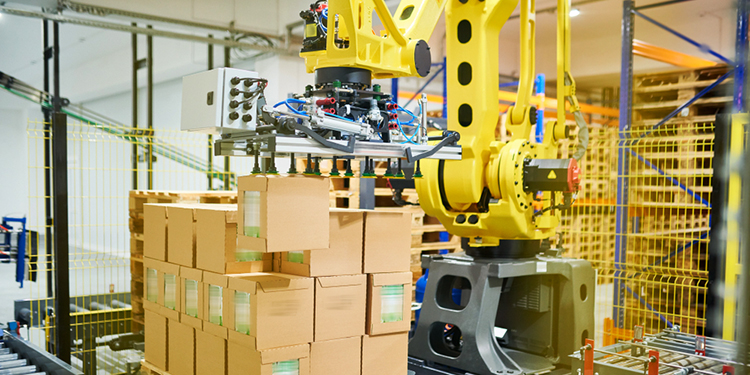Considering Robotic Palletizing? Follow These Four Steps To Select The Right System And Supplier

Building palletloads of product for storage or shipment in unit loads is a key process in most manufacturing, wholesaling, warehousing and distribution operations. Historically, many facilities have used manual labor to hand-stack cases of product (either the same item or mixed) atop a pallet, then apply stretchwrap to contain the load.
But manual palletization is physically taxing at best, and a potential contributor to ergonomic injuries associated with bending, reaching, stretching and lifting at worst. It’s also not the fastest way to build a pallet, and—in the case of mixed loads—not always the best way to build the safest or most optimal stack to prevent product damage due to crushing.
With the latest developments in robotic palletizing technologies (and the increasing difficulties in finding, training and retaining qualified labor), more operations are considering an investment in these systems. Here are four steps facilities owners should work through as they determine if implementing robotic palletizing is right for their operation, and which supplier is the optimal partner.
- Analyze the current palletizing process. This includes identifying all the different products being palletized, and their specifications—including container type, dimensions, weight, and throughput speed. It also involves evaluating each palletload’s configuration, such as: number of layers, different types of layer arrangements, rotations required for stability, and slip or tier sheets usage. Other key datapoints to gather include the ideal location of the robotic palletizing system, the types and locations of the packaging and production equipment it will serve, all mechanical and electrical specification, safety system details, and desired budget.
- Discuss the application with one or more robotics system integrators. An experienced systems integrator can help with an assessment of the current palletizing process and discuss the options available in order to design a facility’s optimal robotic palletizing solution.
- Review the proposed solutions from each integrator. A solid proposal will include a variety of details, such as how the robotic system will be integrated into the current automation and production systems, a complete layout of the proposed system, anticipated capacity and throughput of the solution, and a quote for a complete, turnkey robotic palletizer.
- Evaluate the proposals. When examining each proposal, consider the amount of details included regarding the proposed equipment and its functionality. Determine if the anticipated performance requirements are met, and how modifications, updates and future enhancements will be handled. Finally, ensure that all terms and conditions are accurately described.
Need more guidance for evaluating robotic palletizing possibilities? The members of the Conveyors and Sortation Systems (CSS) Industry Group of MHI have published a free white paper on this topic: “Is Robotic Palletizing Right for You? Strategies for Selecting and Integrating Robotic Palletizing Solutions.”



